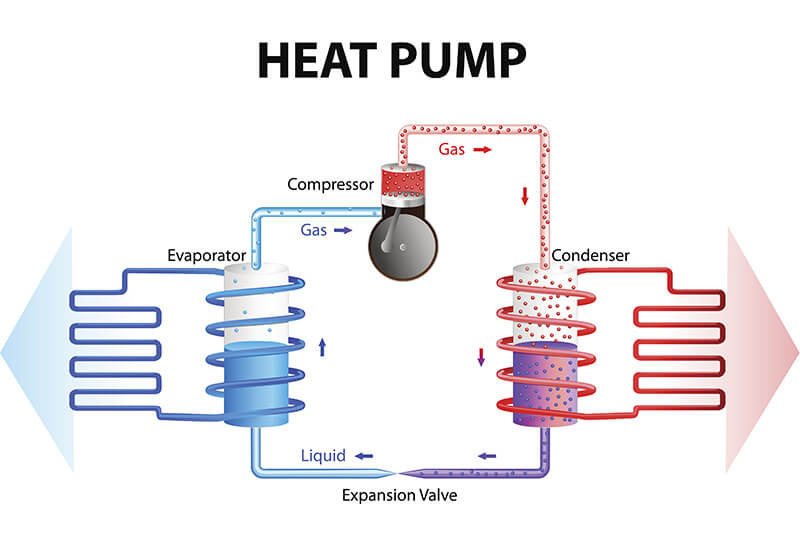Geothermal Systems – What You Need to Know
Geothermal systems work similarly to other heating, ventilation, and air conditioning (HVAC) structures. However, there is one major difference. Geothermal systems utilize the ground rather than air to absorb or release heat. So, if you are considering installing a geothermal heat pump (GHP) system for your facility or business, pay close attention. Here are some things you need to know about geothermal systems.
Geothermal Systems Use Heat Pumps

Traditional heat pumps use a vapor compressor cycle to transfer heat. Conversely, Geothermal systems use the ground as a main energy source.
Anyone with a refrigerator owns a heat pump. Heat pumps use a vapor compression cycle to transfer heat from one place to another. In a refrigerator, a heat pump transfers heat from the cabinet to keep it cool inside. You can feel waste heat removed from the inside of the cabinet by placing your hand behind your refrigerator.
When your building uses a reversible heat pump, heat can flow either direction. During the summer months, heat pumps move heat from the indoors to the outdoors. Conversely, during the winter it moves heat from outside to the inside.
Moreover, air source HVAC systems use air as a heat source and sink. In comparison, geothermal HVAC systems use the ground as a heat source and sink. This works during both winter and summer seasons because the temperature of the ground remains stable year-round.
Two Types of Geothermal Systems
There are two main types of geothermal heat pumps that use the ground, including the following:
- Earth energy: These systems capture heat from a hot spring or geyser for use as energy. Boise, Idaho provides clean and renewable energy for heating buildings in the form of naturally heated water.
- Ground source: These systems use a network of pipes buried in trenches four to six feet deep that remain at a stable temperature in any weather.
Geothermal systems, or ground water source heat pumps, have three main parts – a heat exchanger, an air system, and a heat pump. The heat pump compresses a vapor to impart energy. The vapor condenses and gives up the energy as heat. Then, condensed fluid flows through an expansion valve where a pressure drop causes the fluid to evaporate and absorb heat. This vapor returns to the start of the cycle.
During the heating season, the fluid transfers heat to the air system as it condenses. The air system blows the heated air through the building. During cooling season, the vapor absorbs heat from the air system as it evaporates. The air system blows the cooled air through the building.
The Pros and Cons
Ground water source heat pumps have higher efficiency than air source heat pumps. In fact, according to the U.S. Department of Energy, it is one of the best ways to get clean, renewable energy. Think of it this way — if you want to cool a pot of water, placing it on a block of ice will cool it off faster than placing it next to a block of ice and blowing the cold air at the pot.
In addition, ground water source systems also cost less to run. The ground heats the fluid to evaporate it, so these systems often do not need furnaces or boilers for heating season.
However, ground source systems require land because the pipes occupy horizontal or vertical trenches. In either case, a building must sit on land where a very deep or a very long trench can be dug. Because of the trenches, ground source systems can have higher installation costs than air source systems.
Are Geothermal Systems Right for Your Building?
Geothermal systems work best when the building stands on a large lot or is positioned where a deep hole can be dug. Although the cost and space required by geothermal systems are high, the energy savings means that the system will be more efficient, greener, and cheaper in the long run.
If you are interested in geothermal systems, the Severn Group can help. Contact us today to start the process of designing a ground source HVAC system that’s right for your building.
